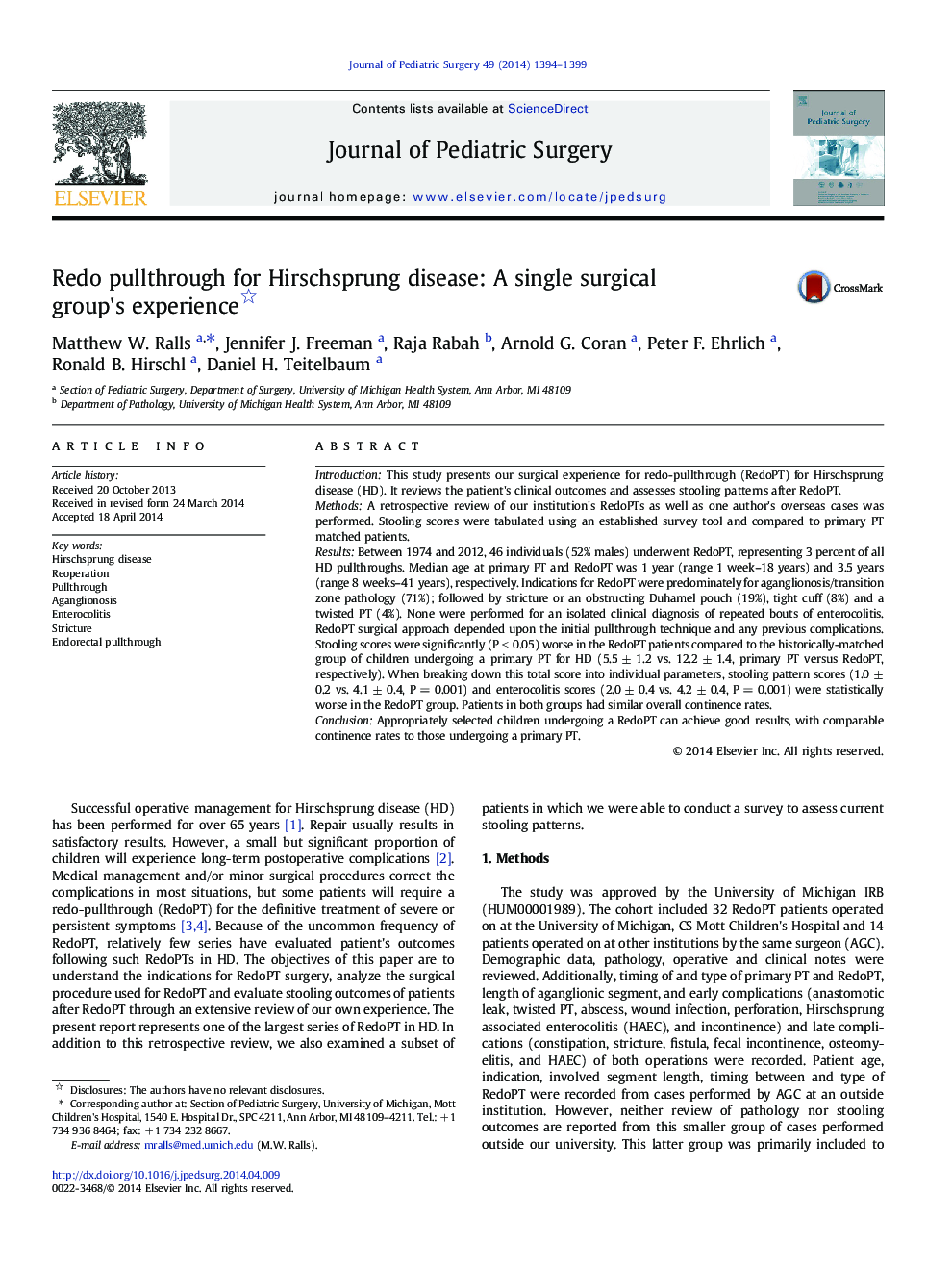| Article ID | Journal | Published Year | Pages | File Type |
|---|---|---|---|---|
| 4155818 | Journal of Pediatric Surgery | 2014 | 6 Pages |
IntroductionThis study presents our surgical experience for redo-pullthrough (RedoPT) for Hirschsprung disease (HD). It reviews the patient's clinical outcomes and assesses stooling patterns after RedoPT.MethodsA retrospective review of our institution's RedoPTs as well as one author's overseas cases was performed. Stooling scores were tabulated using an established survey tool and compared to primary PT matched patients.ResultsBetween 1974 and 2012, 46 individuals (52% males) underwent RedoPT, representing 3 percent of all HD pullthroughs. Median age at primary PT and RedoPT was 1 year (range 1 week–18 years) and 3.5 years (range 8 weeks–41 years), respectively. Indications for RedoPT were predominately for aganglionosis/transition zone pathology (71%); followed by stricture or an obstructing Duhamel pouch (19%), tight cuff (8%) and a twisted PT (4%). None were performed for an isolated clinical diagnosis of repeated bouts of enterocolitis. RedoPT surgical approach depended upon the initial pullthrough technique and any previous complications. Stooling scores were significantly (P < 0.05) worse in the RedoPT patients compared to the historically-matched group of children undergoing a primary PT for HD (5.5 ± 1.2 vs. 12.2 ± 1.4, primary PT versus RedoPT, respectively). When breaking down this total score into individual parameters, stooling pattern scores (1.0 ± 0.2 vs. 4.1 ± 0.4, P = 0.001) and enterocolitis scores (2.0 ± 0.4 vs. 4.2 ± 0.4, P = 0.001) were statistically worse in the RedoPT group. Patients in both groups had similar overall continence rates.ConclusionAppropriately selected children undergoing a RedoPT can achieve good results, with comparable continence rates to those undergoing a primary PT.
